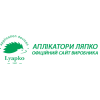Spinal hernia
What is a spinal hernia
Intervertebral hernia is a degenerative disease in which there is inflammation and deformation of the intervertebral disc, its displacement, destruction of the fibrous ring and other negative changes. A hernia periodically compresses soft tissues, such as ligaments, nerve roots, muscles. It can provoke a strong pain syndrome and serious disorders in the functioning of the spine, and even lead to paralysis. It often forms in the lumbar or cervical region, less often in the thoracic region. The lumbosacral spine has the greatest load, so hernias of this department are most common. In recent years, a herniated disc is increasingly common in young people over the age of 25 years.
Stages of hernia development
- Prolapse - the disc slightly changes its position. When the influence of negative factors on him ceases, he will again take a natural position.
- Protrusion - the disc changes position greatly, but does not yet go beyond the boundaries indicated by the vertebrae.
- Extrusion - the core leaves the immediate area of the spine, is in limbo.
- Sequestration - the appearance of ruptures and cracks in the fibrous ring, the exit of the pulp to the outside.
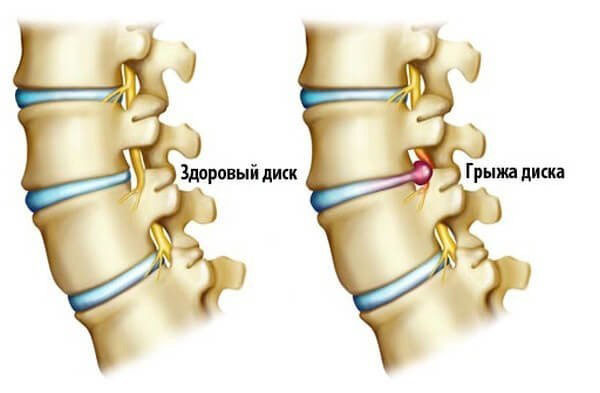
Reasons for the development of an intervertebral hernia
- Insufficient physical activity.
- Wrong posture.
- Increased load on the spine.
- Poor choice of mattress and pillow: on a hard mattress, the spine, instead of relaxing, is tense all night. Use a semi-rigid orthopedic mattress and pillow.
- Various spinal injuries.
- Age over 30 years in men and over 40 years in women against the background of other diseases of the spine.
- Overweight and hereditary diseases of the spine in the family.
- Disk power failure.
Symptoms
The symptomatology of the disease depends on the location of the injury, the pinched nerve root, and the size of the hernia.
Hernia in the cervical spine.
The patient has weakness in the upper limbs, periodic attacks of numbness of the hands, stiffness of the neck, decreased head mobility, headaches, migraines, dizziness, and increased fatigue.
A hernia in the thoracic spine.
Pain due to a thoracic hernia is often mistaken for a stomach ulcer, an attack of cholecystitis, or a heart attack. May be disturbed by pain in the chest, aggravated during breathing, numbness of the fingers or hands, a tingling sensation in the fingers. The intensity of the pain syndrome and the place of its localization in a particular organ depends on the location of the diseased vertebra and the force of pressure on the nerve roots or spinal cord.
Symptoms of a hernia of the lumbar spine are a pronounced pain syndrome due to nerve compression. Pain in the lower back is aching or dull in nature, does not allow the patient to sit still, cough and even stand. It becomes easier only when the patient takes a horizontal position. The pain can torment for years, the muscles of the legs and buttocks atrophy. The patient may feel cold, numbness in the extremities, "goosebumps" and mild but unpleasant stabbing sensations. The work of the pelvic organs is deteriorating. The patient may lose the ability to control defecation and urination.
An early visit to the doctor and a mandatory diagnosis will help stop negative changes in the vertebrae. If you start treatment in the early stages of the disease, you can avoid serious complications and even surgical treatment. Conservative therapy is recommended for mild to moderate stages. Timely diagnosis, medication, physiotherapy, physiotherapy exercises at an early stage will help to completely cure a hernia.
Any exercises should be under the supervision of an instructor and with the permission of the attending physician. With a running hernia, gymnastics will help relieve symptoms.
Spinal traction
Each person should begin the restoration of their physical health from the spine.
In the morning, after waking up, without getting out of bed, you need to stretch, as if stretching the spine. Bend your knees and make smooth turns from side to side.
Morning therapeutic exercises should begin and end with stretching of the spine, stretching should also be done after lifting weights or falling.
One of the simple methods of stretching the spine at home. You should start by lifting the vertebrae.
You should start by lifting the vertebrae. It is best to take the starting position while sitting on a hard chair. You can stand or lie on the floor. Place your palms on your upper thighs, resting your wrists on your lower abdomen. Focus on the spine. Start lifting from the coccyx. Bend in the lower back, imagine that the sacrum takes a horizontal position, like a cat's tail. In this position, the lumbar, thoracic, cervical vertebrae can easily rise and muscle tension in the back will be relieved.
Slowly, resting your hands on your hips, straighten your back and reach up. Then relax your shoulders and stretch your neck up, more the back of your head than your jaw, so that all the muscles of the upper body are tensed.
Such exercises can be done as needed with the appearance of fatigue in the back, you can 5-10 times a day.
With regular exercises, you can achieve traction, alignment of the spine and at 70 years old.
Physiotherapy treatment
In patients with small hernias, with a sluggish nature of the disease, the periodic use of physiotherapy in the phase of subsiding exacerbation, or incomplete remission, can significantly improve well-being, return the patient to working capacity without surgical intervention.
Hernias are prone to progression and physiotherapy must be repeated along with other treatments.
Tasks of physiotherapy treatment
Elimination, or a significant reduction in the area of edema of the spinal nerves, their roots in the corresponding segment affected by a hernia.
Elimination of secondary muscle spasm, which is an important component in the development of chronic back pain.
The direct pressure of the hernia on the ligaments and nerve roots causes pain like a lumbago, neuralgic, sharp pain, like an electric shock, and chronic muscle spasm leads to the development of constant, aching pain in the lower back of low intensity. Despite the low intensity of pain, muscle spasm limits movement in the back and worsens the quality of life of patients.
Normalization of blood flow, which includes a more intense blood supply, active venous and lymphatic outflow.
The use of physiotherapy treatment for acute pain is contraindicated, since with increased blood circulation, tissue edema will increase, which will contribute to the severity of the pain syndrome.
It is necessary to improve blood circulation after the acute pain passes, and the edema begins to decrease. This is usually 2-3 days after the anti-inflammatory, decongestant, analgesic drug treatment started. The use of Lyapko's application therapy in the acute period is allowed, but the individual characteristics of the patient must be taken into account. If the pain intensifies, then you need to wait 2-3 days, if it becomes easier, then you can continue treatment with the applicator.
Simply symptomatic elimination of pain is the use of anesthetics, their introduction by electrophoresis.
The following types of physiotherapy treatment are shown:
- electrophoresis with substances that relieve the inflammatory process and pain syndrome;
- diadynamic currents;
- electroanalgesia;
- sinusoidally modulated currents;
- amplipulse therapy;
- warming treatment of the spine;
- underwater massage techniques, etc.
Mud therapy and balneotherapy give good results.
These physiotherapy procedures are used to treat hernia during rehabilitation after a course of medical and manual therapy. Mud stimulates metabolic processes, reduces swelling and inflammation, and has a positive effect on blood vessels. Paraffin treatment, ozocerite, naftalan are widely used.
We must not forget about hydrotherapy. All kinds of healing showers: rain, needle and dust showers using low pressure, Charcot shower, fan shower and especially underwater massage shower, which is combined with underwater traction, are very useful for osteochondrosis and hernias of the spine.
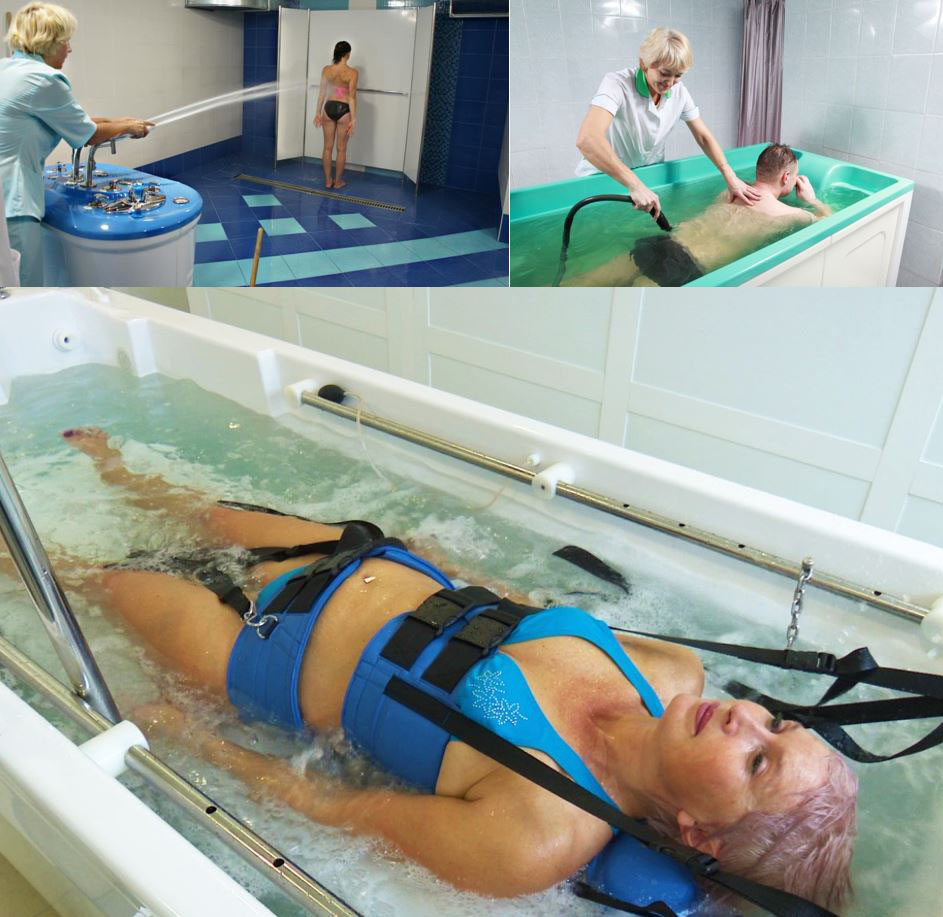
Acupuncture, multi-needle surface application therapy Lyapko is prescribed after pain relief. The method is most effective when combined with massage.
Massage for a hernia of the spine is carried out in the absence of exacerbation with the permission of the attending physician. It helps to improve blood circulation in the nervous, bone, muscle tissues. It will reduce swelling, tension, relieve muscle spasm, pain syndrome, restore lost mobility in the spine. For the treatment of hernias, different types of massage are used: classic, Swedish, myofascial, acupressure.
With the right treatment, it is possible to remove the pain syndrome, the main symptoms, stop further destruction and displacement of the intervertebral discs. Within a few years, with timely, regular treatment, 30% of hernias decrease in size, “shrink”, and if the hernia does not infringe on the nerve, then the pain syndrome disappears, the patient returns to normal life. If at the same time the nerve was clamped, the pain persists, surgical treatment is indicated.
Application therapy Lyapko
Lyapko's applicators in various modifications (plates, rollers, applique belts, applique tapes) are an original, powerful device with many health-improving therapeutic possibilities. Their action is based on the principles of traditional Chinese medicine - superficial multi-needle acupuncture, as well as on the general physiological mechanisms of life.

Mechanisms of action of the applicator.
The high healing effect of Lyapko applicators is due to a combination of intense reactions:
reflex-mechanical;
galvano-electric;
immunological.
How to work with the applicator, application zones
In 90% of cases, it is necessary to act on the pain zone, and to increase efficiency on additional and auxiliary zones. It is always necessary to include the main zone (the region of the spine) in the general recipe.
Additional (skin zones of the lower and upper extremities) and auxiliary zones (anterior surface of the torso and head) should be used when, for a number of reasons, it is impossible to influence the main zone (gypsum is applied, wound surface). To enhance the therapeutic effect, it is advisable to include in the formulation the effect on the symmetrical zones of the healthy side.
The main zones are located on the back surface of the trunk, head, neck.
The main ones are named due to the fact that the skin areas on both sides of the spine and directly above the spine are closest to the exits of the roots of the cranial and spinal nerves and other structures.
Very important meridians also pass here, which affect all organs and systems of the body, in the area in which they pass; control the protective energy of a person, affect his resistance to diseases. With spinal hernias, many patients experience positive dynamics from Lyapko's application therapy. It is combined with all types of medical and physiotherapeutic treatment. The ease of use of Lyapko's application devices, their safety allows you to take such procedures at home.
Application therapy has a pronounced analgesic and antispasmodic effect. Improves blood circulation, lymph flow, microcirculation, reduces tissue swelling. It activates tissue mechanisms of immune defense, increases the level of its own opiate peptides and anti-stress hormones in the blood, reduces the sensitivity of pain receptors, has a positive psycho-emotional effect and, as a result, stimulates the general adaptive mechanisms of a person.
Prolonged peripheral impulses to the spinal centers cause reflex local reactions in the area of application of Lyapko applicators, which are manifested by capillary expansion and activation of the vascular link of microcirculation, improvement of arteriovenous blood flow, which is accompanied by a local increase in temperature and reddening of the skin, muscle relaxation, stimulation of tissue metabolism, improvement of recovery processes.
It is recommended to use large-sized flat applicators on the back area: Applicator "Large mat" , "Massage needle large mat" , "Chance 6.2x4" , "Chamomile M" , "Quadro" , "Chance" , "Folk" , "Duet" .
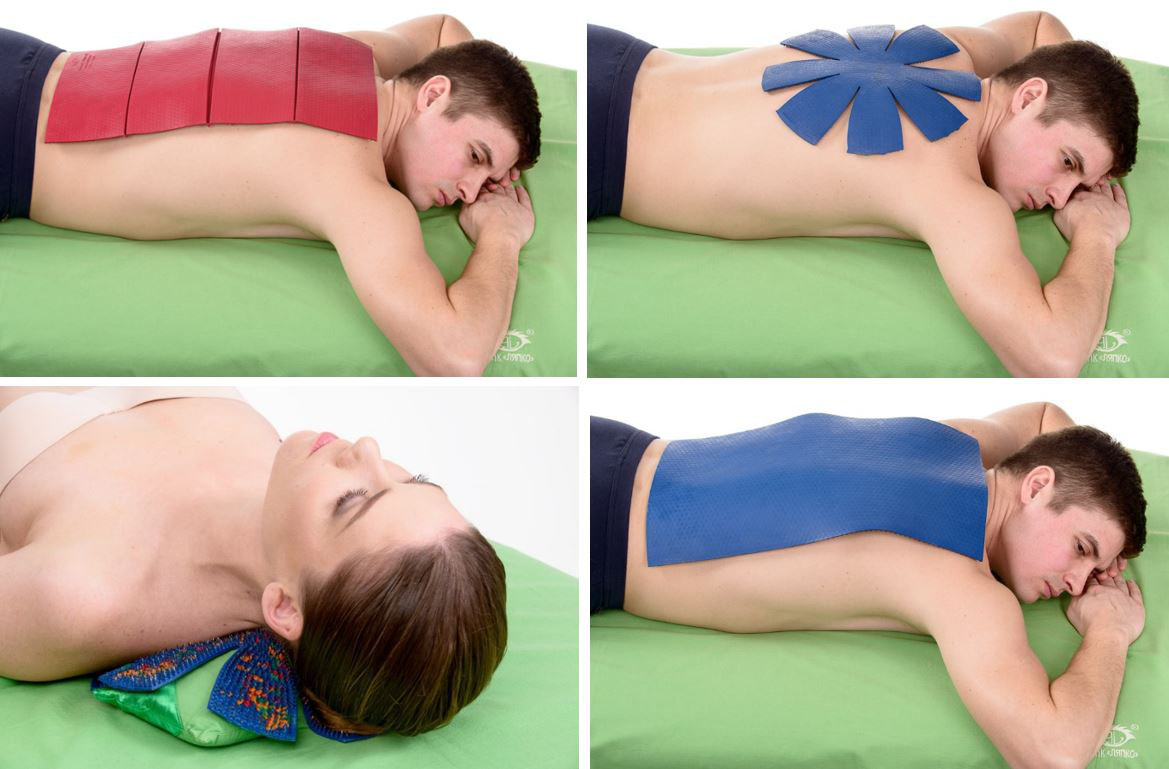
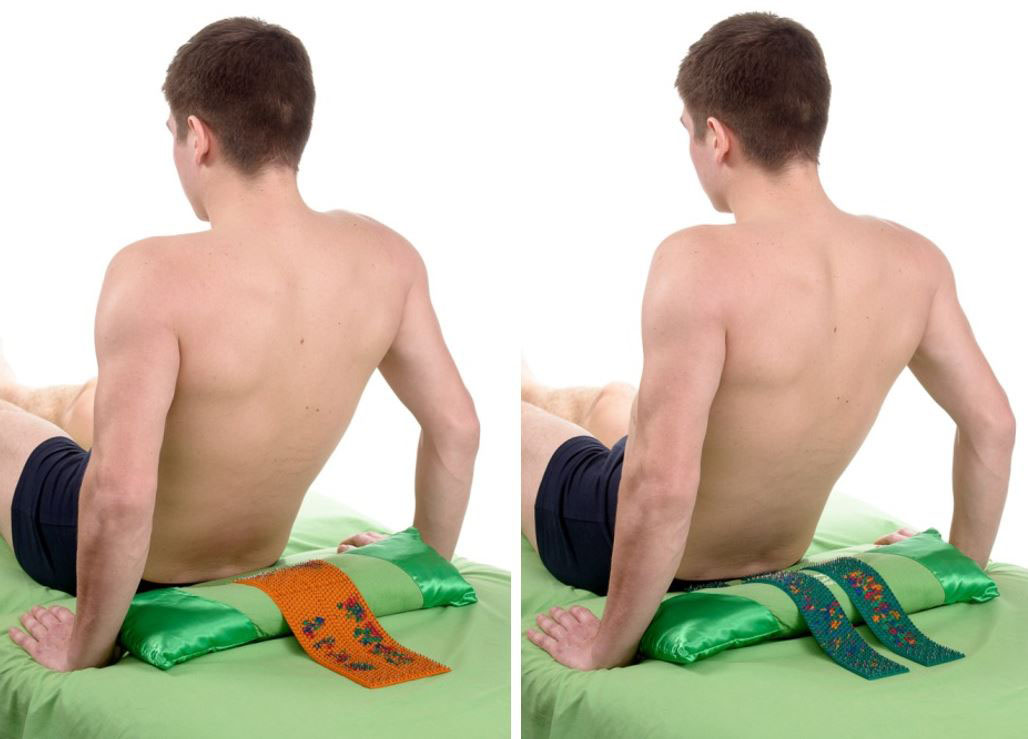

It is also possible to use flat applicators of smaller sizes: “Needle massage pillow” , “Insoles plus” , “Chance” , “Sputnik plus” , which are placed both on the hernia zone, and above and below this zone. You need to look at your feelings. In addition to the back area, to enhance the effect, it is recommended to use applicators on auxiliary zones on the front surface of the body, in the area of the hernia projection. For example: a hernia in the lumbar spine - we place the applicator on the stomach. The exposure time is 20–30 minutes, the course of treatment is 10–14 days, which can be repeated after a break in 1–2 weeks. Such procedures can be applied in courses for a long time.


It is better to end the session by affecting the feet using the Insole Plus applicator , which can be applied to all parts of the body.
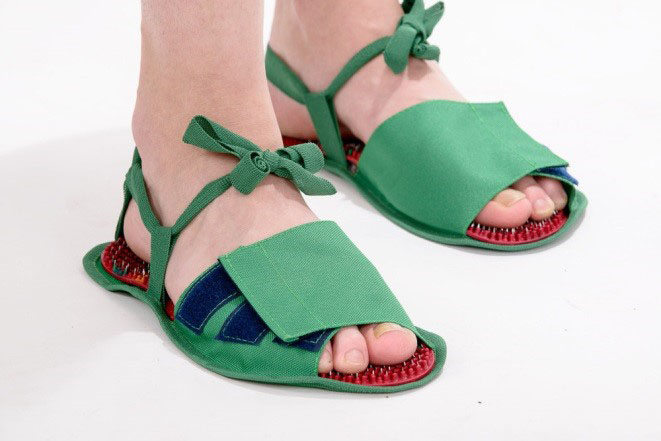
In addition to flat applicators, it is possible to roll in the area of the back, the front surface of the body with the “Large Roller M” or “Universal Roller M” until a uniformly pink color of the skin appears. They can also be used to warm up the body before a massage.
First, roll with a roller along the spine, along the intercostal spaces on one side, until a uniformly pink color appears. Then we roll the second side in exactly the same way. The exposure time is 3–7–10 minutes, depending on the individual skin reaction.
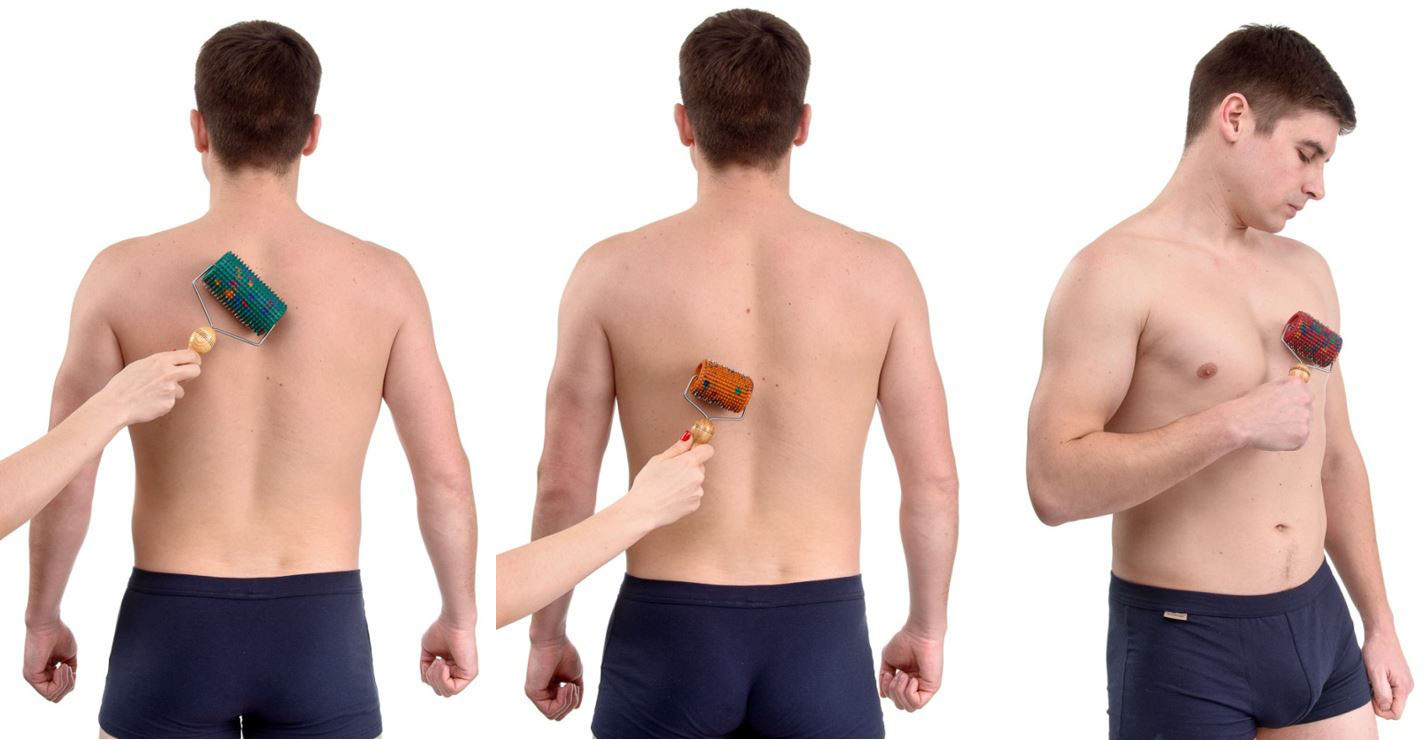
Belt "Kid" , Belt "Universal M" - is fixed across and along the spine on the hernia zones, above and below them or is used in the prone position, like a regular applicator.
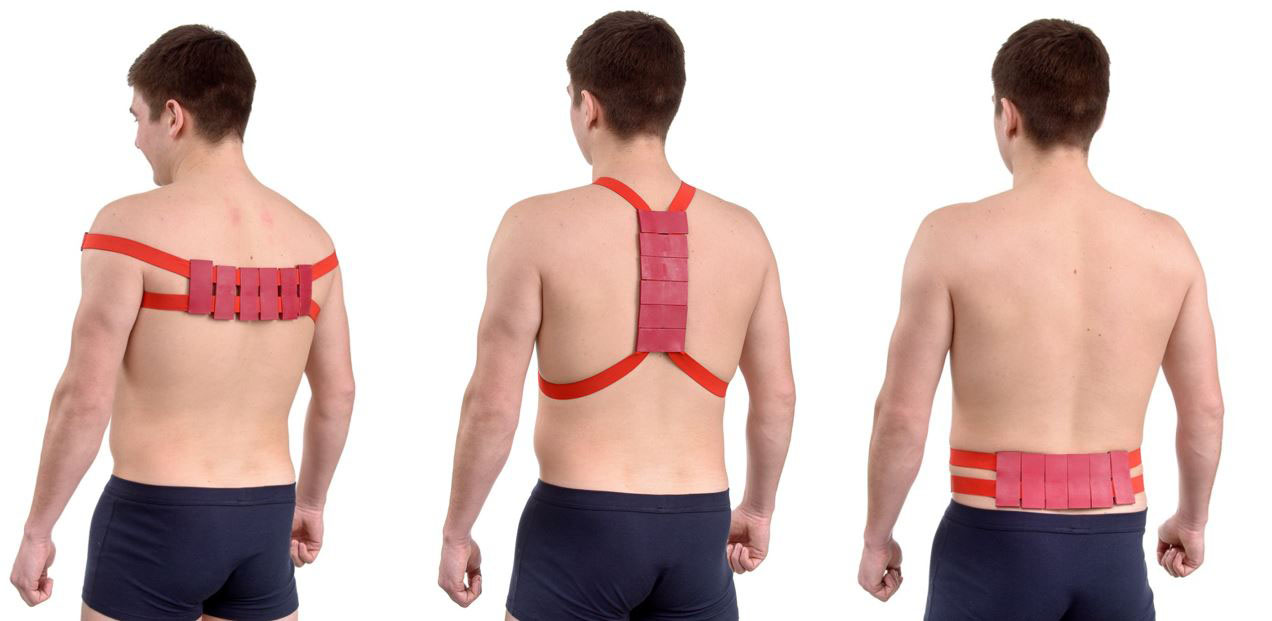
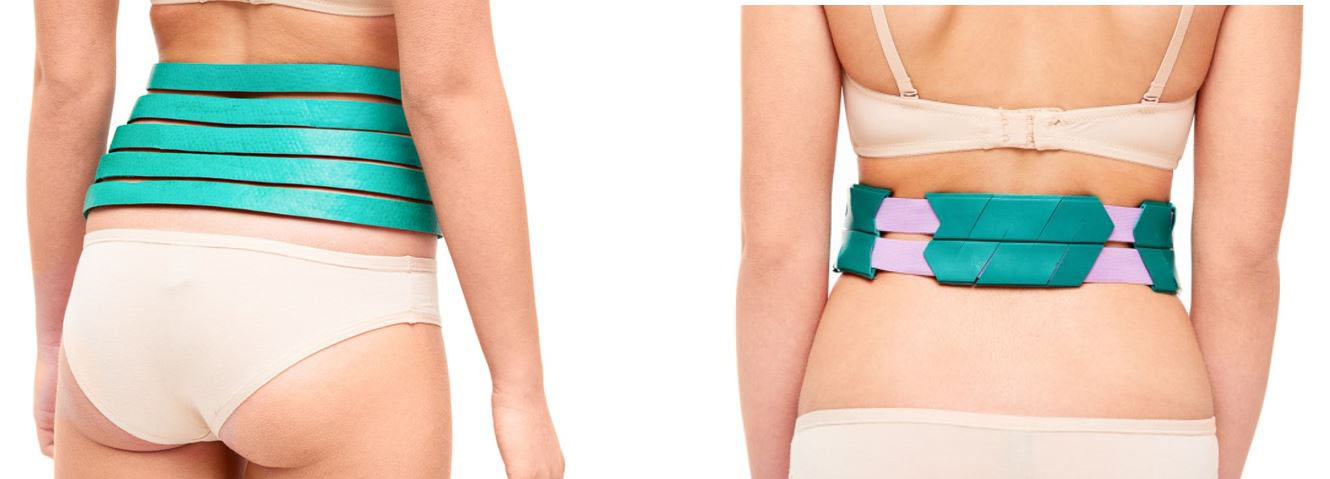
You can also wrap the hernia area with Magic Tape "Health" .
The applicator "Kraplinka" can be fixed on the pain area. Given the small area of impact, long-term wearing - 1 - 3 hours.
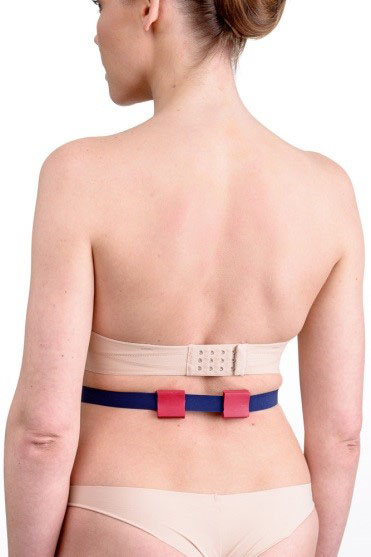
You can use both a manual back massage and massage using the Pharaoh massager , which can be worked through a thin cloth or over a body lubricated with oil, cream.

The combined use of Lyapko applicators, needle rollers and the Pharaoh massager mutually potentiates (increases) their therapeutic effectiveness.
After removing the applicator at the site of its application for 10 minutes, all pores are open. The application of anesthetic ointments, creams, compresses enhances their therapeutic effect.
conclusions
In the presence of a small hernia that does not compress the nerve root, following the principles of a healthy lifestyle and a rational approach to physical activity, regular exacerbations can be avoided. To do this, you need to carry weights correctly, abandon bags and switch to a backpack or trolley, a bag with wheels. Be sure to monitor your posture, fight flat feet, control weight, give up bad habits and consume enough fluids. Regularly engage in therapeutic exercises, swimming. With the planned physical activity, use a semi-rigid corset on the lumbar region, and also avoid hypothermia. The use of Lyapko's application therapy at home is a good means of preventing exacerbations.
All these simple measures will allow you to maintain the health of the spine and freedom of movement for a long time.
